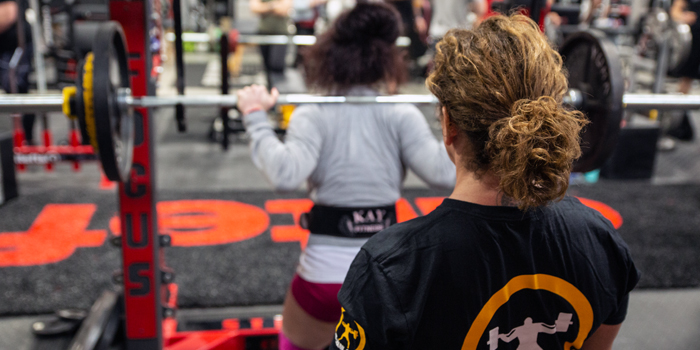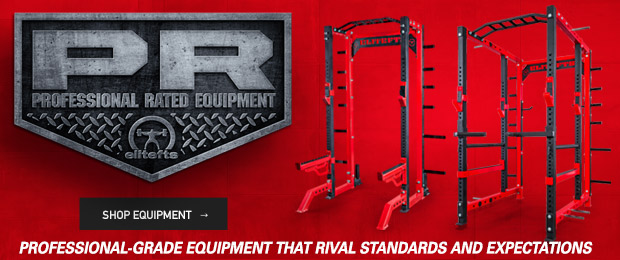
There may not be one right training system or program for everyone, but there is certainly one way to screw them all up. Choosing the right program involves looking at your goals and where you’re currently at, and then identifying your physical and technical needs, as well as what fits your personality best (as I covered in my last article).
RECENT: How to Coach Based on Personality Type
Once you settle on a program, you’ll have to map out your training cycle. When doing this, there are a lot of factors (time, equipment, training partners, etc.), but one overarching concept will be the glue that holds all of the pieces together: training to get the most out of all of your days in the gym. This might seem like an obvious statement, but I think it’s important to honestly ask yourself this question:
Is my training program based on me being at my strongest every session?
Let me explain what I mean by that question. If you are training in a methodical way toward a goal, every session should have work that needs to get accomplished to stay on track toward your goal. Here is a visual explanation of what I mean that I created a few years back:
So what are some tangible ways to ensure your program is designed correctly? Typically, the main barbell work in a program is based around percentages, Rating of Perceived Exertion (RPE), total volume, or a number of other things. Assistance work and conditioning is then organized in a variety of ways; all of that should progressively overload as time passes.
When organizing all of these variables, you’ll likely need to use maxes for your main lifts as a starting point (whether for percentage based heavier sets or dynamic effort sets). The mistake that many people make is choosing maxes based on either:
- Their meet PRs, or;
- Their all-time best lifts in the gym.
When doing that, you are using maxes from when everything was at its all-time best (adrenaline, environment, strength, recovery, motivation, etc.) and then basing an entire training cycle off of them. The issue with that is that the majority of sessions are not replicating that same scenario. Think about it, could you go into the gym at any random day or time and guarantee that you’d 100 percent hit your all-time best PRs? I didn’t think so (and if you can, you’re likely a beginner, and your PRs aren’t truly at your maximal strength yet neurologically).
Inevitably, when you’re doing percentage work, 85 percent of your adrenaline-fueled meet PR is more like 95 percent on an average day when you are dealing with stress, have accumulated fatigue from the past few weeks of training, and didn’t sleep well the night before. If you base training on this, before you know it you’ll be burnt out and discouraged, wondering why you can’t hit the numbers you’re supposed to. This is why a training max is so important, and why so many experienced coaches preach the importance of it.
Whatever your maxes are, take 90 percent of that and base your training program accordingly. It will take discipline and humility (and your training may even seem too light in the beginning), but it will pay off. If you are using an RPE scale, make sure you understand the actual scale and discipline yourself to follow it accordingly. Rather than just thinking of RPE as “1 to 10,” consider the more detailed descriptions of how many reps should be left “in the tank” for each RPE level. This article provides a good description of RPE in the beginning with associated rep counts and percentages.
The same goes for assistance and supplemental work. If you plan your training program around being able to progress these lifts, and you need a three-hour training session to complete them, is that realistic for your training cycle? If it is, great. But if you know realistically based on your priorities that you’ll get an average hour and a half in the gym, then base your training around that.
RELATED: Strength Programs Don't Work
The perfect program, in theory, is worthless if you can’t get half of the sessions done because you’re burnt out or injured. You should be gaining momentum over the course of a training cycle and hungry to get on the platform, not burnt out and missing lifts while you wait for the whole thing to be over with. Now, this doesn’t mean you won’t have training that is exhausting or rough days, but if they are planned correctly, you shouldn’t be discouraged because it’s all part of the plan.
Momentum and accumulation of work will be the keys to a successful training cycle, so design your training program in a way that allows you to build that momentum every single day. As you get better at building that momentum, you’ll stay more laser-focused through the really good days and the really bad days. They won’t affect you as much emotionally because you’ll know they’ve all been accounted for in your program. Being able to approach training this way will positively affect your performance on the platform, as well as every other area of your life that training touches.











1 Comment